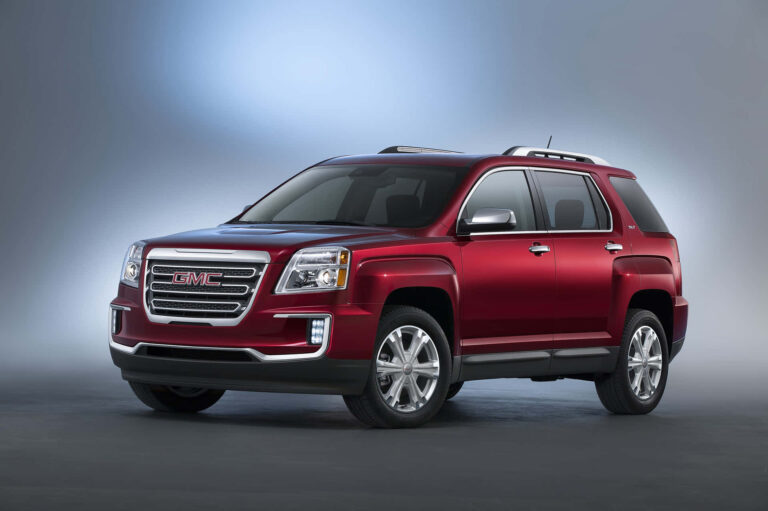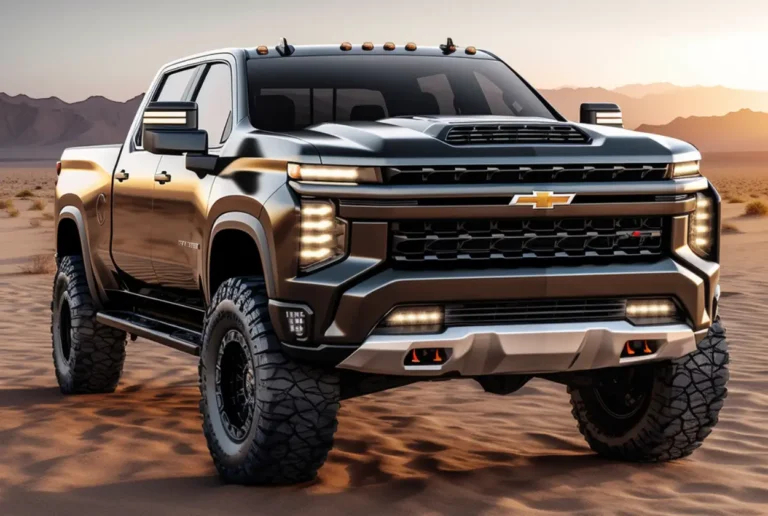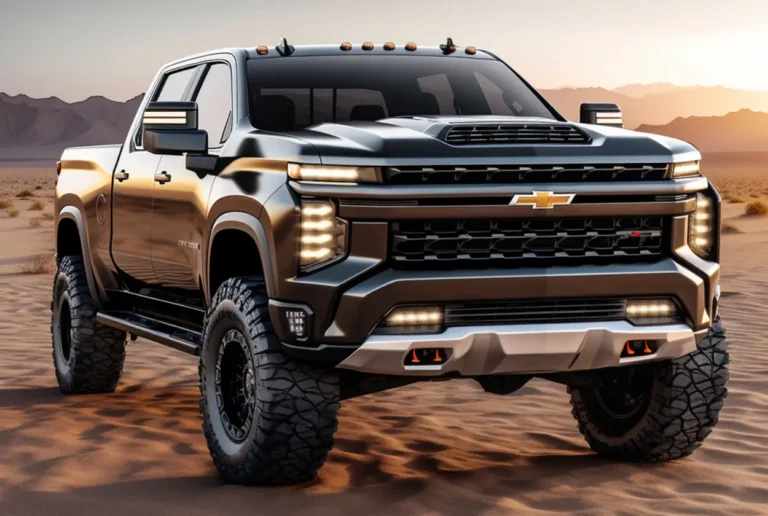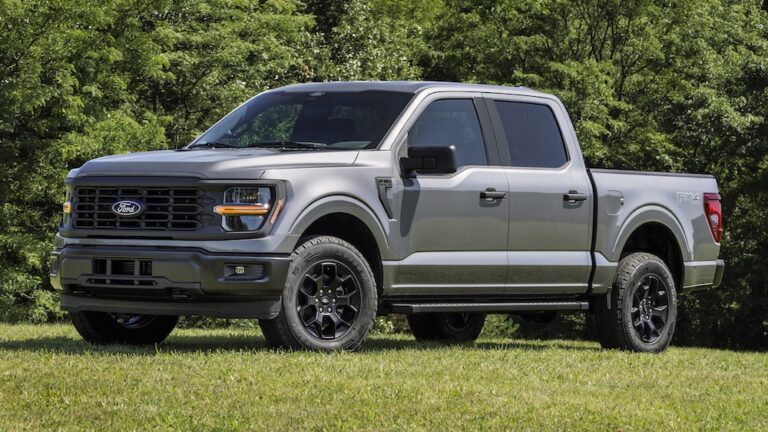1950s Chevy Trucks For Sale: A Comprehensive Buyer’s Guide
1950s Chevy Trucks For Sale: A Comprehensive Buyer’s Guide cars.truckstrend.com
For enthusiasts of classic American iron, few vehicles capture the essence of post-war optimism and rugged utility quite like the 1950s Chevrolet truck. These iconic workhorses, once the backbone of farms and small businesses across the nation, have transcended their original purpose to become highly sought-after collector’s items, custom build platforms, and nostalgic daily drivers. The allure of a 1950s Chevy truck for sale lies not just in its distinctive curves and robust build, but in the tangible connection it offers to a simpler, yet profoundly innovative, era of American history. Whether you’re a seasoned restorer, a customizer with a vision, or simply someone dreaming of cruising in a piece of automotive art, understanding the nuances of these timeless machines is the first step toward finding your perfect vintage ride.
This comprehensive guide will delve into the world of 1950s Chevy trucks, offering insights into their enduring appeal, the different models available, where to find them, what to look for, and practical advice to navigate the exciting journey of acquiring one of these automotive legends.
1950s Chevy Trucks For Sale: A Comprehensive Buyer’s Guide
The Golden Era: Why 1950s Chevy Trucks Endure
The 1950s were a transformative decade for Chevrolet trucks. Emerging from the austerity of World War II, America was ready for progress, and General Motors delivered with vehicles that blended increasing comfort and style with their inherent durability. Two distinct design eras defined this decade for Chevy trucks: the "Advance Design" series (1947-1955 First Series) and the "Task Force" series (1955 Second Series-1959). Each offered unique aesthetics and advancements, yet both shared a common DNA of reliability and an unmistakable presence.
These trucks became ubiquitous symbols of American enterprise, hauling everything from farm produce to construction materials, delivering goods, and serving countless families. Their timeless design, robust engineering, and the sheer volume produced mean that even today, decades later, a healthy market exists for those looking to buy, restore, or customize a piece of this rich heritage. Their enduring popularity is a testament to their build quality and the powerful nostalgia they evoke.
Understanding the Models: A Decade of Innovation
The 1950s saw significant evolution in Chevrolet truck design and engineering. Knowing the key differences between the two main series will help you narrow down your search.
Advance Design (1947-1955 First Series)
The Advance Design trucks represented Chevrolet’s first major post-war redesign, and they were a massive success. Characterized by their smoother, more integrated styling compared to pre-war models, they featured wider, more comfortable cabs, improved visibility, and a more streamlined appearance.
- Key Features: Five-bar horizontal grille (with variations over the years), rounded fenders, integrated headlights, and a distinctive "turtleback" hood.
- Popular Models: The 3100 half-ton pickup is the most iconic and widely available, but also the 3600 (3/4-ton), 3800 (1-ton), panel trucks, and suburban carryalls.
- Engines: Primarily inline-six "Thriftmaster" engines (216, 235 cubic inches), known for their reliability and torque.
- Appeal: Beloved for their classic, rounded vintage look, they are popular for both stock restorations and mild customs.

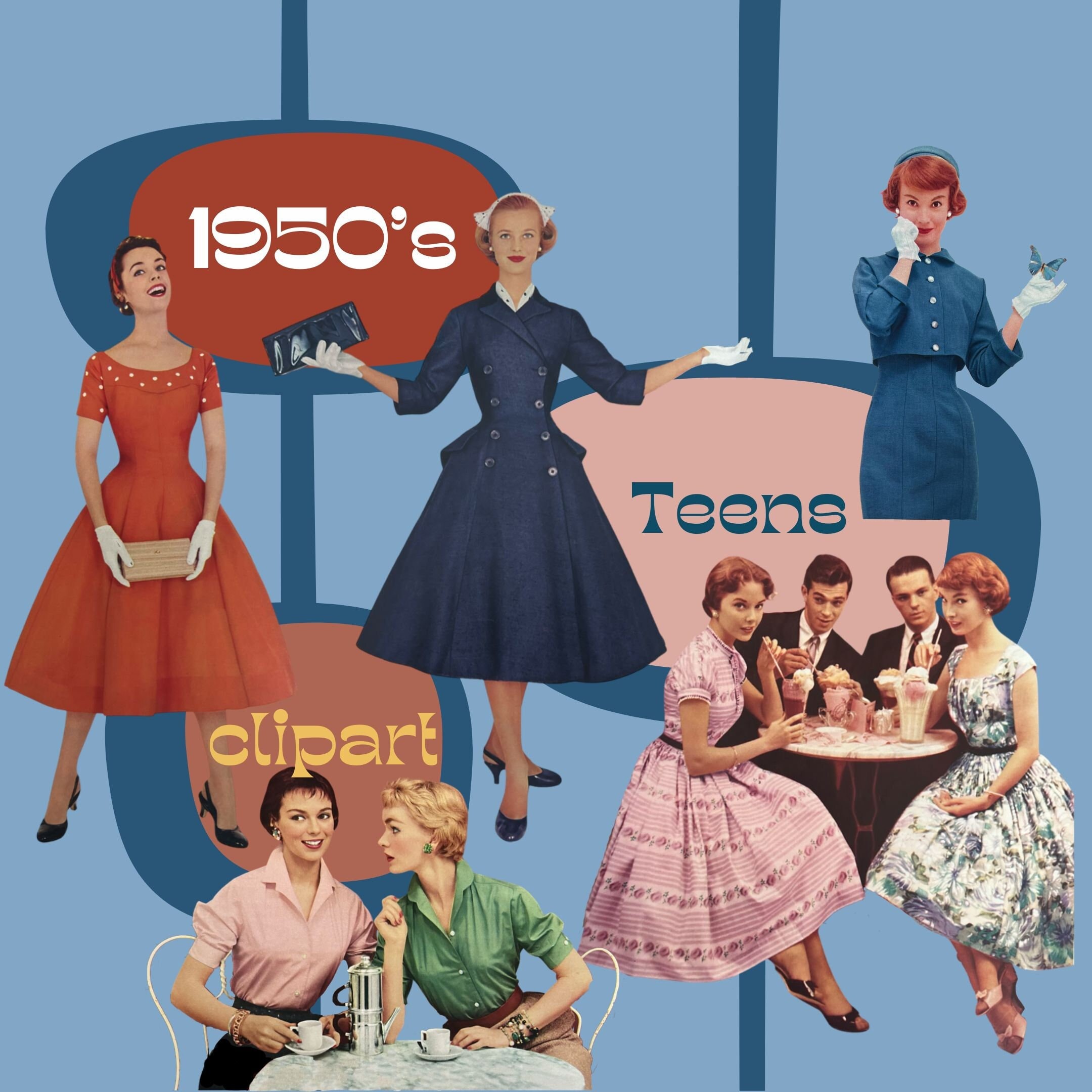
Task Force (1955 Second Series-1959)
A dramatic departure from the Advance Design, the Task Force trucks ushered in a more modern, car-like aesthetic. The mid-1955 introduction marked a significant shift, bringing features like a panoramic wrap-around windshield, hooded headlights, and a sleeker body. Crucially, 1955 also saw the introduction of Chevrolet’s legendary Small Block V8 engine as an option, forever changing the performance landscape of trucks.
- Key Features: Wrap-around windshield (especially 1955-57), prominent grilles (varying by year, e.g., ’55-56 egg crate, ’57 single bar, ’58-59 quad headlights), flatter fenders, and optional step-side or fleet-side beds.
- Iconic Models: The 3100 "Apache" (post-1957 badging), the luxurious "Cameo Carrier" (1955-1958, an early "personal-use" truck with fiberglass bedsides), and the various panel and Suburban models.
- Engines: Continued offering of inline-six engines, but the availability of the Small Block V8 significantly boosted performance and appeal, especially for customizers.
- Appeal: Highly sought after for their more contemporary styling, making them ideal candidates for restomods (restored with modern components) and high-end custom builds.

Where to Find Your Dream 1950s Chevy Truck
The market for 1950s Chevy trucks is vibrant and diverse. Here are the most common avenues for finding one for sale:
- Online Marketplaces:
- Dedicated Classic Car Sites: Hemmings, ClassicCars.com, Bring a Trailer, AutoHunter. These platforms often feature higher-quality listings and more detailed descriptions.
- Auction Sites: eBay Motors frequently has a wide range of conditions and prices.
- Social Media Groups: Facebook Marketplace and specialized classic truck groups are excellent for finding private sellers, often with good community insights.
- Specialized Classic Truck Dealers: Many dealerships focus exclusively on classic and vintage trucks. They often have inspected vehicles, offer financing, and sometimes provide warranties or restoration services.
- Live Auctions: Major auction houses like Mecum, Barrett-Jackson, and others regularly feature significant 1950s Chevy trucks, particularly high-end restorations or rare models.
- Local Classifieds & Word-of-Mouth: Don’t underestimate the power of local advertising, swap meets, or simply asking around. Many great deals are found this way, often before they hit national markets.
- Car Shows & Swap Meets: These events are not just for display; many owners are open to selling, and you can inspect the vehicle in person and talk directly with the owner.
Condition Categories: What to Expect and How to Evaluate
When looking at 1950s Chevy trucks for sale, understanding the different condition categories is crucial for setting realistic expectations and budgets.
- Project/Barn Find: These are typically non-running, incomplete, or heavily rusted vehicles.
- Price: Lowest entry point (a few thousand dollars to under $10,000).
- What to Expect: Significant rust, missing parts, seized engines, no interior.
- Ideal For: Experienced DIY restorers with a large budget for parts and professional work, or someone looking for a long-term passion project.
- Evaluation: Focus on the frame’s integrity, major body panel rust (cab corners, floor pans, fenders), and the presence of a clear title.
- Driver Quality: These trucks are typically running and drivable, but may have cosmetic flaws, minor mechanical issues, or older restorations that show their age.
- Price: $10,000 – $30,000+ depending on model and specific condition.
- What to Expect: Usable interior, functional drivetrain, some rust bubbling, worn paint, but capable of being driven.
- Ideal For: Those who want to enjoy a classic immediately and potentially improve it over time, or a solid foundation for a restomod.
- Evaluation: Test drive is essential. Check for strange noises, smoke, proper braking, functional lights. Inspect for major rust, especially in structural areas.
- Restored/Show Quality: These trucks have undergone professional, comprehensive restorations, often to concours standards. They look immaculate and function flawlessly.
- Price: $35,000 – $80,000+, with some rare or exceptional models exceeding $100,000.
- What to Expect: Flawless paint, pristine chrome, new interior, rebuilt engine and drivetrain, often better than new.
- Ideal For: Collectors, those who want a turn-key classic for shows or weekend cruises, or someone who values originality and top-tier craftsmanship.
- Evaluation: Scrutinize the quality of the restoration work. Look for panel gaps, paint imperfections, and ensure all systems operate as they should. Get documentation of the restoration if possible.
- Custom/Restomod: These trucks combine classic aesthetics with modern performance and comfort features (e.g., modern V8 engine, automatic transmission, power steering, air conditioning, disc brakes).
- Price: Highly variable, from $30,000 to well over $100,000, depending on the extent and quality of modifications.
- What to Expect: Unique builds, often with modern drivetrains, upgraded suspensions, custom interiors, and unique paint.
- Ideal For: Buyers who want the classic look but with modern drivability, reliability, and comfort for regular use.
- Evaluation: Understand the modifications. Ensure the custom work is professionally done and safe. Test drive extensively.
Practical Advice: Always conduct a thorough pre-purchase inspection. If you’re not mechanically inclined, hire a qualified classic car mechanic to inspect the vehicle for you. Pay close attention to rust, especially in the cab corners, floor pans, fenders, and bed. Check the frame for any signs of damage or previous repairs. Verify the engine and transmission condition. Most importantly, ensure the seller has a clear, transferable title.
Key Considerations Before Buying
- Budget Beyond Purchase Price: Factor in sales tax, registration, insurance, transportation costs, and potential immediate repairs or upgrades. Restoration costs can easily double or triple the initial purchase price for a project truck.
- Purpose of Ownership: Will it be a daily driver, a weekend cruiser, a show truck, or a work truck? This will dictate the condition you need and the modifications you might consider.
- Mechanical Aptitude & Resources: Are you planning to do the work yourself, or will you rely on professional shops? Know your limits and the availability of skilled mechanics in your area.
- Parts Availability: Generally, parts for 1950s Chevy trucks are excellent due to their popularity. Reproduction panels, trim, mechanical components, and interior pieces are widely available from various suppliers. However, rare trim pieces or specific model-year-only parts can still be challenging to source.
- Storage: Do you have secure, weatherproof storage for your classic truck?
- Documentation: A clean, transferable title is paramount. Ensure the VIN matches the title and the vehicle.
Tips for a Successful Purchase
- Research Extensively: Learn about the specific year and model you’re interested in. Understand common issues and unique features.
- Set a Realistic Budget: And stick to it. Remember to account for potential hidden costs.
- Inspect Thoroughly: In person is best. If not possible, request detailed photos and videos, and consider a third-party inspection.
- Don’t Rush: The right truck will come along. Patience is key.
- Ask Questions: Don’t hesitate to ask the seller about the truck’s history, maintenance, and any known issues.
- Join a Community: Online forums and local classic truck clubs are invaluable resources for advice, parts, and camaraderie.
Estimated Price Table for 1950s Chevy Trucks For Sale
Note: These are estimated price ranges as of late 2023/early 2024 and can vary significantly based on specific model, originality, options, location, market demand, and the overall quality of restoration or customization. Always do your own research and get a professional appraisal.
| Model/Series | Year Range | Condition: Project/Barn Find | Condition: Driver Quality | Condition: Restored/Show Quality | Condition: Custom/Restomod |
|---|---|---|---|---|---|
| Advance Design | |||||
| 3100 (Half-Ton Pickup) | 1947-1955 (1st Series) | $5,000 – $15,000 | $15,000 – $35,000 | $40,000 – $80,000 | $50,000 – $120,000+ |
| 3600 (3/4-Ton Pickup) | 1947-1955 (1st Series) | $4,000 – $12,000 | $12,000 – $28,000 | $35,000 – $65,000 | $45,000 – $100,000+ |
| Panel/Suburban | 1947-1955 (1st Series) | $6,000 – $18,000 | $18,000 – $40,000 | $45,000 – $90,000 | $60,000 – $150,000+ |
| Task Force | |||||
| 3100 (Half-Ton Pickup) | 1955 (2nd Series)-1959 | $8,000 – $20,000 | $20,000 – $45,000 | $50,000 – $100,000 | $60,000 – $150,000+ |
| Cameo Carrier | 1955-1958 | $15,000 – $30,000 | $35,000 – $70,000 | $80,000 – $150,000+ | $100,000 – $200,000+ |
| 3600/Apache (3/4-Ton) | 1955 (2nd Series)-1959 | $6,000 – $15,000 | $15,000 – $30,000 | $40,000 – $85,000 | $50,000 – $120,000+ |
Frequently Asked Questions (FAQ)
Q: Are parts readily available for 1950s Chevy trucks?
A: Yes, generally, parts availability is excellent. Due to their immense popularity, numerous aftermarket companies produce reproduction body panels, trim pieces, mechanical components, interior parts, and even complete chassis. Specific rare trim for certain years or models might require more searching, but overall, maintenance and restoration are well-supported.
Q: How much does it cost to restore a 1950s Chevy truck?
A: Restoration costs vary wildly depending on the truck’s initial condition and the desired final quality. A full, professional, frame-off restoration can easily cost anywhere from $50,000 to $150,000 or more, in addition to the purchase price of the project truck. A less extensive, "driver quality" restoration might be $20,000-$50,000. DIY can save labor costs but still requires significant investment in parts.
Q: Can a 1950s Chevy truck be a daily driver?
A: A completely stock 1950s Chevy truck can be a daily driver, but it will lack modern conveniences like power steering, power brakes, air conditioning, and highway cruising speeds. Many owners opt for "restomod" conversions, swapping in modern engines (like a Chevy LS V8), automatic transmissions, independent front suspensions, disc brakes, and A/C to make them more comfortable and reliable for daily use.
Q: What’s the main difference between Advance Design and Task Force trucks?
A: The primary differences are styling and engine options. Advance Design (1947-55 first series) trucks have a more rounded, classic post-war look with a five-bar grille and only inline-six engines. Task Force (1955 second series-59) trucks are more modern, with a distinctive wrap-around windshield, different grille designs, and the crucial option of a Small Block V8 engine, making them popular for performance upgrades.
Q: What should I specifically look for regarding rust?
A: Critical rust areas include cab corners, floor pans, rocker panels, fender bottoms, bed floors, and the frame rails. Surface rust is often manageable, but deep, pitting rust that has compromised the metal’s integrity is a major concern and expensive to repair. Always inspect the frame thoroughly for any signs of rot or serious damage.
Conclusion
Owning a 1950s Chevy truck is more than just acquiring a vehicle; it’s an investment in a piece of Americana, a statement of style, and a gateway to a vibrant community of enthusiasts. Whether you envision a perfectly restored showpiece, a rugged custom, or a reliable cruiser, the market for 1950s Chevy trucks for sale offers a wide array of options to suit every budget and ambition. By understanding the different models, knowing where to look, diligently assessing condition, and considering all practical aspects, you can confidently embark on the rewarding journey of finding and bringing home your dream vintage Chevrolet truck. The roar of that inline-six or small-block V8, the unmistakable lines, and the countless stories these trucks carry will surely make every drive an experience to cherish.


